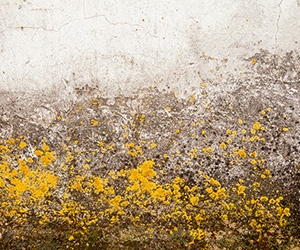Contact East Coast Mold Remediation for Mold Testing
When you suspect mold in your home, you need a knowledgeable team on your side. Whether you need mold testing or require mold removal, East Coast Mold Remediation is here for you. Our team of experts in mold remediation can answer all your questions. We are commonly asked about the many types of mold that can grow inside your Baltimore, MD home. Different molds can cause contrasting side effects, and some are more harmful than others. Here’s our quick guide to the common types of household mold. Contact us if you notice mold in your home!
Look for Signs of Alternaria
Alternaria is one of the most common types of allergenic mold. You may find Alternaria growth where there is dampness or excess moisture. Typically occurring in bathtubs, showers, and sinks, this type of mold often appears dark green or brown in color with a hairy texture. Besides damage to your personal belongings, Alternaria can also spur on certain respiratory conditions, especially those affecting the upper respiratory tract, nose, and mouth. Be careful—since Alternaria can spread quickly you’ll want to seek prompt professional help.

Aspergillus and Worsening Mold Exposure Symptoms
Another common household mold, Aspergillus tends to form thick layers of mold. These might appear as long chains of mold on certain surfaces and may show up in a variety of colors. Although Aspergillus isn’t typically the most dangerous type of mold, it can quickly become more toxic in the right environment. Asthma attacks and lung infections often worsen with this type of mold exposure.
Let Us Inspect Your Home for Chaetomium
Chaetomium is a common mold in water damaged buildings. You will recognize this type of mold by its distinct, cottony texture and its tendency to change colors from white to black over time. Most often Chaetomium growth is found in damp areas and is accompanied by a musty smell. The most noticeable signs of this mold are the health effects. You may experience skin or nail infections and immune system problems as a result of Chaetomium.
Cladosporium: Common in Warm and Cold Environments
Like Alternaria, Cladosporium is also an allergenic mold. However, this variety can grow in warm and cold conditions alike. You might find Cladosporium growth inside cupboards, under floorboards, and on different household fabrics. If you suspect Cladosporium in your home, be sure to look for green or brown spots with a suede-like texture. When exposed to this variety of mold you may also experience rashes, worsening asthma, and itchy eyes.
Recognizing Penicillium Growth in Your Home
Penicillium is another allergenic form of mold that can adversely affect those with respiratory conditions. Lung inflammation, asthma, and sinus infections tend to appear or worsen with prolonged exposure to this type of mold. You will recognize Penicillium by its blue or green color and velvet-like texture. This type of mold is most commonly found in carpets, on wallpaper, and in ducts.
What Are the Black Mold Symptoms?
Stachybotrys is what most of us would call black mold. While black mold exposure is not necessarily worse for your health than other varieties, prompt black mold removal is still a necessity. Exposure to Stachybotrys can result in serious health problems including difficulty breathing and intense fatigue. Usually this type of mold will appear to be dark green or black with a slimy texture. Be on the lookout for Stachybotrys on wood, cardboard, and paper.
Other Types of Mold and Mold Symptoms
This list of mold types is not comprehensive. Hundreds of other varieties can grow in damp, dark areas of your home. At East Coast Mold Remediation, we are committed to removing mold so you can enjoy your home again. We also help homeowners get rid of the following varieties of mold, among others:
- Aureobasidium – This type of mold is often found behind wallpaper or on wooden surfaces. Aureobasidium has a distinct appearance, often coming in shades of pink, brown, and black. Exposure to this type of mold can cause skin infections and irritation.
- Fusarium – Fusarium tends to grow best at cold temperatures and in carpeting, wallpaper, and fabric items. Those who are exposed to this variety of mold often experience symptoms such as runny nose, sore throat, skin irritation, and more.
- Serpula Lacrymans – Although you’ll most commonly find this type of mold outdoors, it can also take hold within your home. Wooden surfaces are the most susceptible to Serpula Lacrymans.
- Trichoderma – Typically found in white and green patches, Trichoderma grows on wallpaper, carpet, and a variety of fabrics. This type of mold is also found within HVAC systems and air filters. Not only is Trichoderma harmful to your health, but it can also damage building materials.
- Ulocladium – This mold is black in color and is usually found after extreme water damage. Left unchecked, those with a weakened immune system can develop hay fever and other health conditions.
Call in the Experts for Mold Remediation
Have you noticed one of these signs of mold in your Baltimore home? Don’t hesitate to call the professionals at East Coast Mold Remediation. We are experts in mold inspection and remediation services, and we will help restore your home to normal. Contact us today to learn more about how to get rid of black mold and other damaging mold growth.


